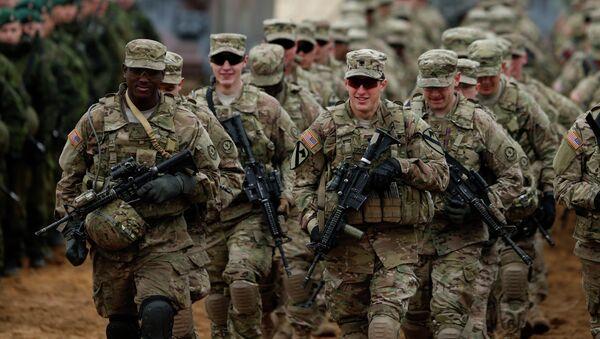In the not-so-distant future, the US military could be facing a major transformation with one-third of its forces potentially being replaced by robotics. This bold prediction comes from General Mark Milley, the Chairman of the Joint Chiefs of Staff, who envisions a new era of warfare where advanced technology plays a key role. As the world continues to evolve, the military must adapt to stay ahead – but what does this mean for the future of defense? Let’s delve into the implications of this groundbreaking shift and what it could mean for the future of national security.
The Rise of Robotics in the US Military: A Look into Future Trends
General Mark Milley, Chairman of the Joint Chiefs of Staff, predicts that by 2039, one-third of the US military could be comprised of robotic systems. This significant increase in the use of robotics signals a shift towards a more technologically advanced and efficient military force.
With advancements in artificial intelligence and robotics, the US military is exploring new ways to integrate these technologies into its operations. Some future trends in robotics within the military include:
- Autonomous Weapons Systems: Unmanned ground vehicles and drones that can operate independently on the battlefield.
- Robotics for Logistics: Automated systems for supply chain management and transportation of goods.
- Cyber Warfare: Robotics used for defensive and offensive cyber operations.
Implications of Increasing Robotization on National Security and Warfare
In a recent statement, General Mark Milley, the Chairman of the Joint Chiefs of Staff, revealed that the US military could potentially have one-third of its forces replaced by robots by the year 2039. This rapid increase in robotization within the military raises significant implications for national security and warfare strategies.
The integration of robots in military operations could lead to a shift in the dynamics of warfare, with robots taking on more centralized roles in combat scenarios. This transformation has the potential to enhance the effectiveness and efficiency of military missions, while also raising concerns about the ethical implications of delegating decision-making to autonomous machines. As technology continues to advance, it will be crucial for policymakers and military leaders to carefully consider the strategies.
Challenges and Opportunities for integrating Robots in Military Operations
According to General Mark Milley, the US military could see one-third of its personnel replaced by robots by 2039. This shift presents both challenges and opportunities in integrating robots into military operations.
Challenges:
- Ensuring proper training and maintenance of robotic systems.
- Addressing ethical and legal considerations in autonomous decision-making.
- Mitigating cybersecurity risks and vulnerabilities in robotic technology.
Opportunities:
- Enhancing efficiency and effectiveness in combat situations.
- Reducing risks to human soldiers in dangerous missions.
- Leveraging robotic capabilities for reconnaissance and surveillance tasks.
Recommendations for Safeguarding Human Control and Ethical Concerns in the Robotic Revolution
Milley’s statement about one-third of the US military potentially being robotic by 2039 highlights the rapid advancements in technology that are driving the robotic revolution. As we embrace this transformation, it is crucial to prioritize the ethical considerations and human control to ensure the responsible deployment of robotic systems.
Here are some recommendations for safeguarding human control and addressing ethical concerns in the robotic revolution:
- Implement clear guidelines: Establish clear guidelines and regulations to govern the development and deployment of robotic systems, ensuring transparency and accountability.
- Enhance human oversight: Emphasize the importance of human oversight in decision-making processes involving robotic systems, maintaining control and accountability.
- Encourage ethical training: Provide ethical training for developers and users of robotic technologies to promote responsible and ethical practices in the field.
In Conclusion
As we look ahead to 2039, the possibility of one-third of the US military being comprised of robots is not as far-fetched as it once seemed. With advancements in technology rapidly progressing, the integration of robots into our armed forces is becoming more of a reality. This shift brings about a multitude of implications, from the potential for increased efficiency and precision on the battlefield to ethical considerations about the role of autonomous machines in warfare. As we navigate this new frontier, it is important to carefully weigh the benefits and drawbacks of a more robotic military, and ensure that the decision-making process remains grounded in our values and principles. The future of our armed forces may look very different in the coming years, but with thoughtful planning and consideration, we can adapt and embrace the opportunities that technology brings.
